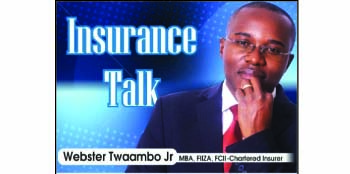 OVER the past few weeks, I have received numerous questions on what should be the correct sum insured in motor vehicle insurance.
OVER the past few weeks, I have received numerous questions on what should be the correct sum insured in motor vehicle insurance.
This being so critical and potentially subject to controversy, I thought of discussing it while the topic of comprehensive insurance is still fresh in the memories of readers.
The Sum Insured (SI) is the maximum amount of money that an insurer will pay in an event of a claim. It is the limit of liability as far as own damage on the insured vehicle is concerned.
That being the case, it is absolutely necessary to get this amount right when buying a motor insurance policy on a comprehensive basis. I will first address the four different ways on placing values on a vehicle and thereafter discuss why other methods are not the best ways of determining the SI.
As we discuss this topic, readers must bear in mind the reason for insurance; it is to bring back the insured in the position they were before the loss, nothing less, nothing more or using a technical terminology known as indemnity.
The first is the purchase price paid. This is the value derived from the money actually spent to buy a vehicle.
At times it may be an ideal SI especially where there has been little negotiation or it is a transaction at arm’s length. Let’s take an example where a friend or a relative wants to dispose a vehicle and thinks of another relative to buy it.
Chances are that the price will be much lower given the relationship between the two. If the vehicle was to be insured on that value, will insurers find a similar vehicle on the similar value in an event of a loss, certainly not.
Another example on the same point is where one party decides to give another a vehicle in form of a gift.
In this example there is no price at all, therefore this criteria would fail the test of arriving at the correct SI insured because a vehicle cannot be insured at a nil price.
The second criterion is the book value. This is a value usually esteemed by accountants and at times picked from inventories or in financial statements.
Why should this criterion fail to be the basis for the SI? Well, it is because of the depreciation applied which usually does not give the actual reflection of the value of the vehicle.
Take an example where a company applies a straight line method of depreciation over five years. This means if a vehicle is bought straight from Toyota Zambia at K100, 000 after a year it will be K90, 000.
If the vehicle is properly kept it is unlikely that it will have lost value of K10, 000 or if this seems difficult to swallow, what happens after five years. It means the vehicle will have no value (or an insignificant residual value as it were) but it is inconceivable that a vehicle bought from the show room would after five years have no value.
How many years do the second-hand vehicles from Japan run before we buy them yet we still attach some considerable value? This is where the book value fails the test.
The other one is landed costs. When importing a vehicle from abroad such as Japan, the costs that are associated with the purchase are Cost, Insurance, Freight (CIF), duty and other incidentals such as agent commission, lodging, fuel et cetera.
Again in my view, this is not the best method of arriving at the SI; why? Buying a vehicle from Japan takes several weeks to arrive in Zambia after being ordered.
Imagine a situation where your car is involved in an accident and is beyond economic repair; would you like to wait for that long without a car. How will you take your children to school or how do you make your errands?
It is unlikely to find another car readily available for the landed costs because if someone has to sell it to you, they will factor in profit. Suffice to state that landed costs may be used as SI and insurers normally will take comfort because it is easier to calculate.
This brings us to the best basis for determining the SI, Current Market Value which will be discussed at length next week.
[On another note motorists should remember to display an insurance disc which bears the national Coat of arms, Road Transport and Safety (RTSA) and Insurers Association of Zambia (IAZ) logos respectively, including an original stamp of the insurer inter alia].
Comments: webster@picz.co.zm or webster_tj@hotmail.com or on face book search for Insurance Talk-Zambia page or call/text 0977 857 055
(The author is a chartered insurer with more than twelve years industry experience)






